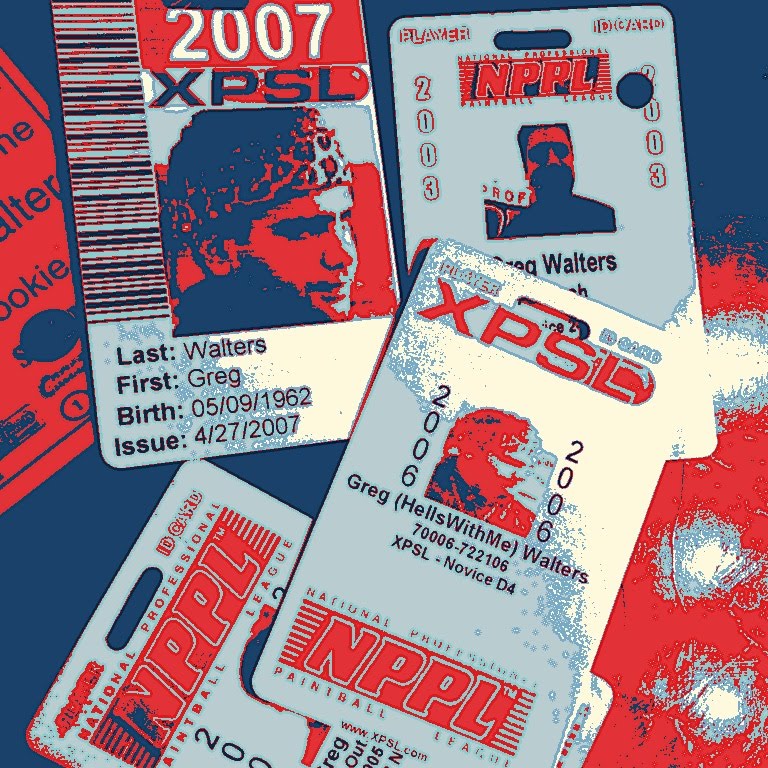Experts from Chancellor Angela Merkel's conservatives and her Social Democrat (SPD) coalition partners have agreed to outlaw all games in which players shoot at each other with pellets.
The governing parties say paintball trivialises violence and risks lowering the threshold for committing violent acts.
Infringements to the new rules, which the cabinet hopes to pass before a general election in September, could incur fines of up to 5,000 euros (£4,400).
A 17-year-old shot dead 15 people in the southwestern town of Winnenden, before killing himself in March, stunning many Germans and leading politicians to call for tighter gun rules.
The teenager shot many of his victims in the head with his father's legally registered pistol. His father, a member of a shooting club, had 15 guns at home – fourteen were locked in a gun closet as required by law but the pistol was in the bedroom.
Germany toughened its gun laws in 2002 after Robert Steinhauser, 19, shot dead 16 people before turning the gun on himself at a high school in the eastern German city of Erfurt.
The changes raised the minimum age for gun ownership to 21 from 18 and required gun buyers under 25 to present a certificate of medical and psychological health. Gun laws already required applicants to pass rigorous exams that can take up to a year.
The new rules would also grant authorities more rights in conducting checks with people owning guns, the sources said.
Sources in the SPD said the parties were also moving towards on agreement on the creation of a nationwide weapons register and were considering setting up biometric security locks for weapons' stores.
Sunday, May 10, 2009
Tuesday, February 17, 2009
Army's Ultimate Paintball Gun is No Toy
From Wired
Army's Ultimate Paintball Gun is No Toy
By David Hambling
The plan to turn toy rocket technology into new weapon for the U.S. Army is racing ahead. Last year, we looked at a proposal from toymakers Lund & Company Invention to use their know how to build a Variable Velocity Weapon System (VVWS). The idea was that by varying the muzzle velocity, the same gun could fire crowd-control impact rounds or lethal high-velocity bullets. Now, the program has been refined into what might be the ultimate non-lethal paintball gun.
The company has received a $723,109 contract to mature their technology and build a weapon that's supposed to be a significant improvement over one of the main non-lethal weapons used by the U.S. military and law enforcement today.
The FN303 "paintball gun on steroids" (pictured) can fire pepper spray, paint, and non-lethal impact rounds -- making it awfully useful for keeping crowds in check. Soldiers and cops rate it very highly. But it's got some problems at longer ranges. And in America, it still suffers from image problems after the death of Victoria Snelgrove, who died after being hit in the eye by an FN303 round in a disturbance after the Boston Red Sox won the World Series.
The version of the VVWS currently being developed would be a purely non-lethal replacement for the FN303. The key advantage is the ability to vary the muzzle velocity; no details have been released, but this may be controlled automatically by a laser rangefinder. At short ranges, it will have a low muzzle velocity, ensuring the impact is safe; but the speed can also be increased to extend the maximum range beyond what can currently be achieved.
The VVWS will have a maximum range of 150 meters, compared to a range of 50 meters for the FN303 for point targets. Longer ranges are sometimes quoted for the FN303 but these seem to refer to using it to deliver volleys of "pepperball" rounds to saturate an area with a cloud of PAVA pepper powder. The military do not use this type of ammunition, being confined to impact rounds which, unlike paintballs, are hard and shatter on impact. (Paintball-type rounds are also available for marking with washable or indelible dye).
The VVWS will be able to fire five hundred shots on a single fuel canister, compared to a hundred and ten for the FN303. Note that this is fuel rather than compressed air; Lund's rockets use an ingenious method of electrolyzing water to produce hydrogen gas. The exact propulsion method for the VVWS has not been disclosed.
"Tremendous progress is being made," CEO Bruce Lund told Danger Room, although he was not at liberty to give many details. "We have reduced the unit to a portable hand carried second-generation Beta model and are ready for preliminary field tests."
The VVWS will also be lighter than the five-pound FN303. The motive for this is likely to be the need for an under-barrel version that can be attached to an M4 carbine. An under-barrel version of the FN303 has already been fielded - taking us back to the original set-up of having both lethal and nonlethal options easily to hand.
However, the VVWS will still suffer the same limitation of any kinetic weapon; during riots in detention centers, Iraqi prisoners have been known to use mattresses as shields which is going to block most non-lethal rounds. (The beam from the Active Denial System might go through though).
Lund also says that the VVWS should be lower in cost than the older weapon. Lund & Company are toymakers after all, and used to building products to a tighter price specification than military suppliers. The VVWS is certainly not a toy. But if its cheap enough, the technology may well be featured in recreational products, like paintball guns, in the years to come.
Subscribe to:
Posts (Atom)


